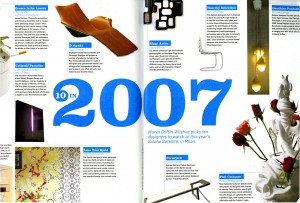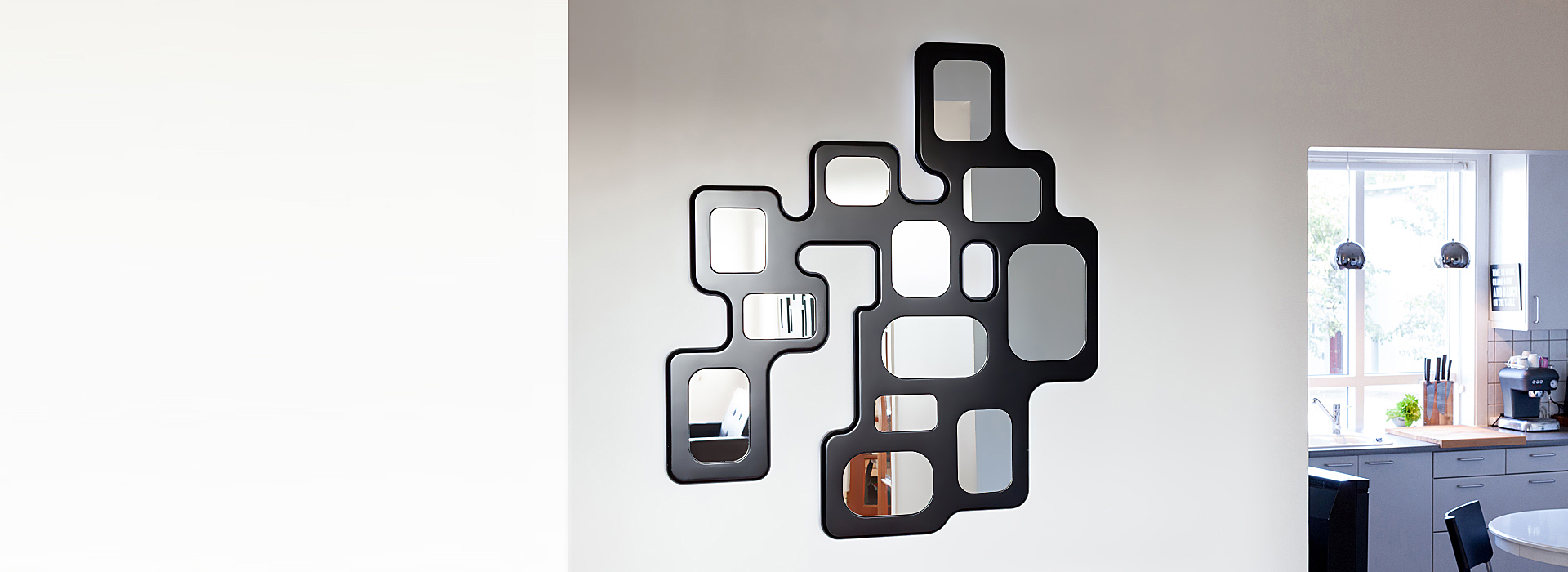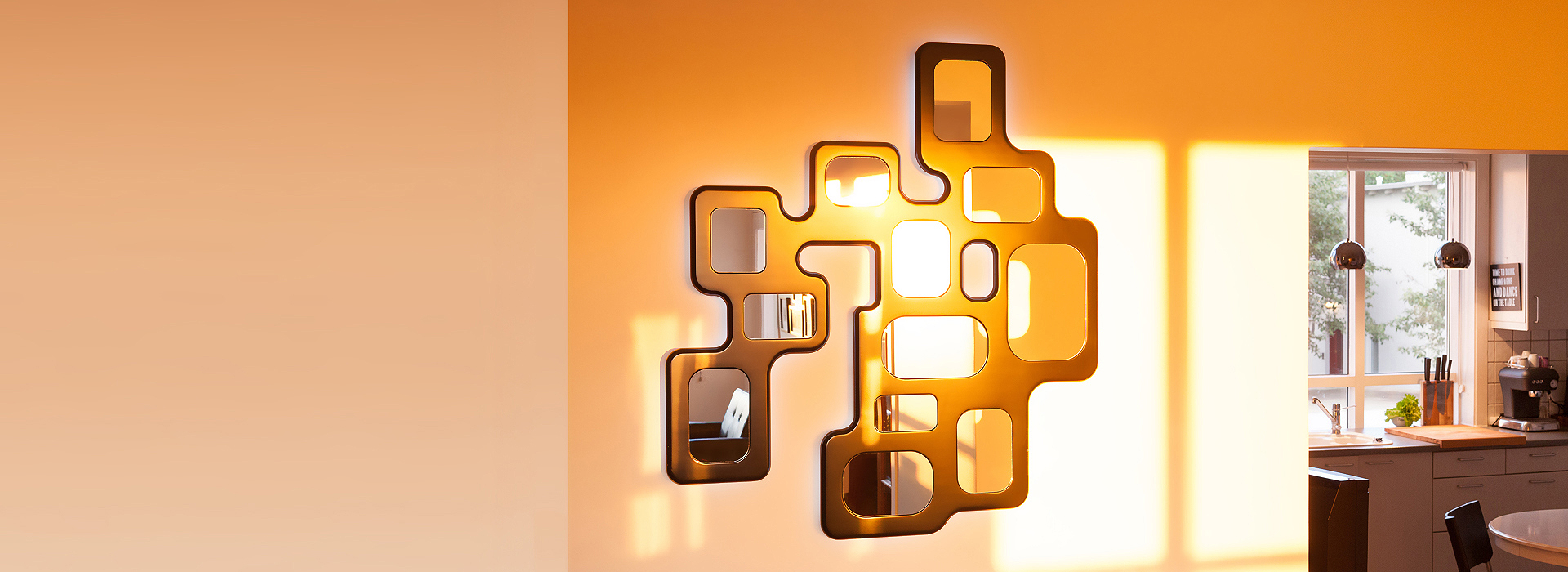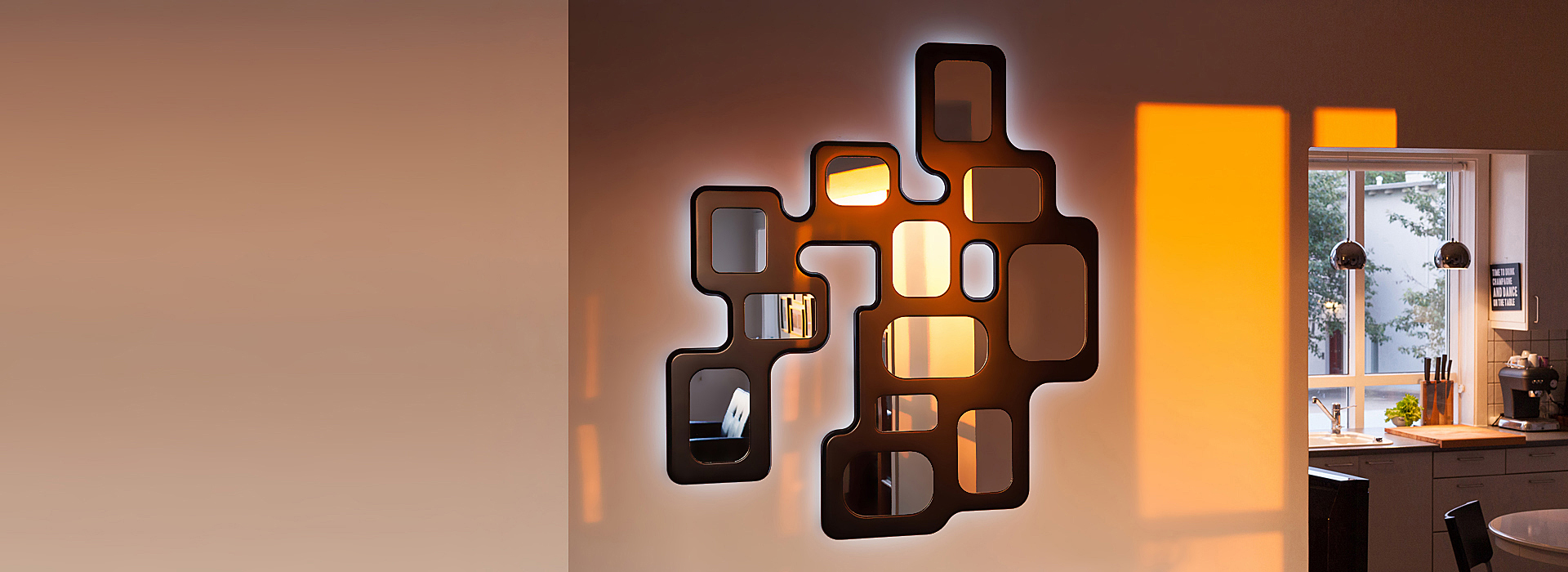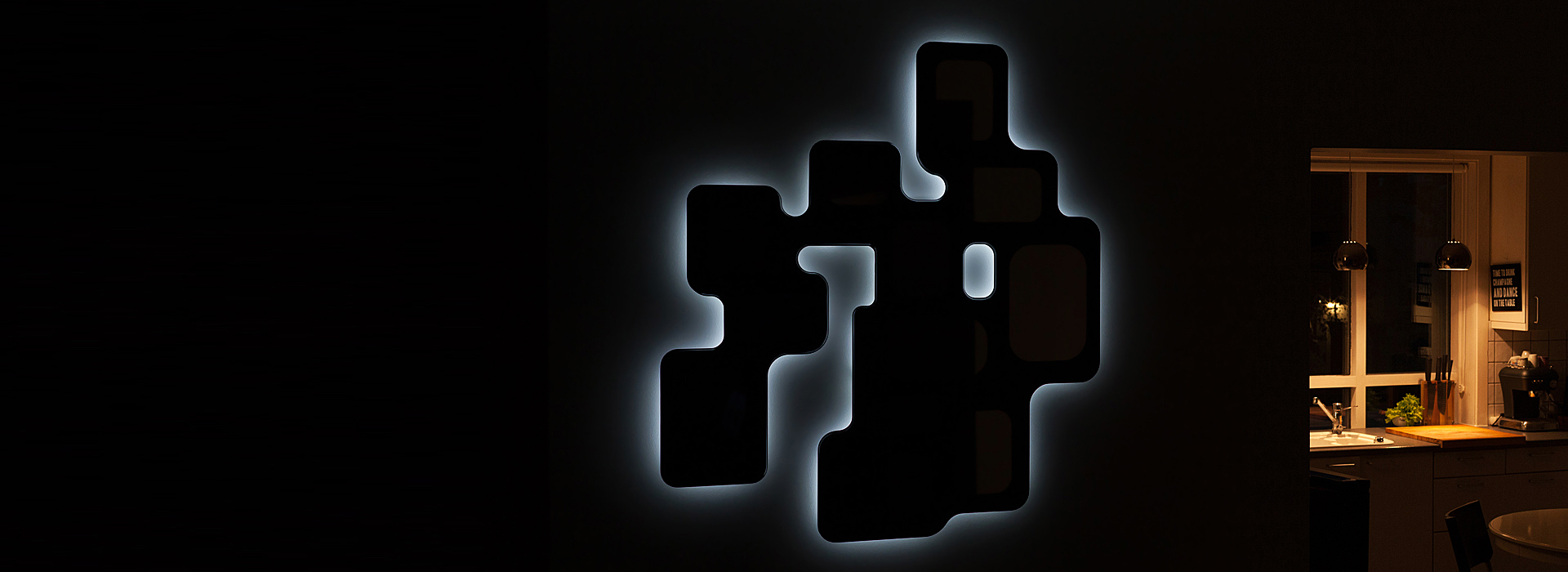
Concept
Lucio is both a wall lamp and a design mirror, a beautiful light source which creates a warm and comfortable atmosphere in the home, and a stylish modern design piece. The subtle light bounces from the wall, while also reflecting from the frames of its 12 mirrors. The combination produces the perfect setting as you enjoy your own private sanctuary of light.
“Art must be organic, design must be practical,” says Siggi Anton, designer of the Lucio Wall Lamp. “With this piece, I strove to create a balance: between art and design, between modern and classical.”
ART AND DESIGN
Unlike a painting, the Lucio design mirror doesn’t exclude or clash with other pieces in a room. Though modern and asymmetrical, its reflective sources make it a complementary accent for more classical pieces as well. It changes throughout the day to playfully reflect different types of light—rosy sunrise, dazzling midday, softening dusk—and the mirrors at different heights offer different prospects for each member of the family. But it’s also a functional piece, expanding a room and harmonizing the different design elements within it.
 ALWAYS CHANGING, ALWAYS PRESENT
ALWAYS CHANGING, ALWAYS PRESENT
Siggi Anton says he sees the Lucio “connecting rooms, transmitting light whether day or night, and offering a new experience every day, in different seasons and weather conditions, and in all kinds of spaces and from all kinds of angles. I like it particularly at sunset, witnessing the rays of sunlight playing around in the room, and then all of a sudden realizing that the piece on the wall is like an eclipse, a silhouette reflecting the cozy atmosphere of the dimly lit living room I’m sitting in.”
The Lucio can be placed anywhere from nightclubs to summer-cottages, in bathrooms, kitchens, on a wall facing the end of a dining table, or in an entry hall or corridor. It adds depth and life to any space. Many owners leave it on all the time, as the energy-efficient Lucio makes a good nightlight.
A MODERN CLASSIC
Early buyers of the Lucio, who have lived with the design for several years, say that it combines effortlessly with all their classical pieces of 20th century modern furniture—that it’s familiar, yet new. “They all tell me that it’s a classic,” Siggi Anton reveals, “that they couldn’t live without it. I find that so gratifying, because my goal with Lucio was to enhance the experience of being in a home.”
FIREGAZING
“My grandparents lived in Hollywood for three years in the 1950s, while my grandmother studied opera singing,” says Siggi Anton. “My grandfather was a mason: he built fireplaces for movie stars. When they returned to Iceland, my grandparents built a California-style 60s modernist villa in a new neighborhood in Reykjavik. Teak, modern lines, big windows. But it also had three fireplaces, which my grandfather made of colorful brown rock, hand-picked from a mountain in Iceland. When I was a kid, I remember him relaxing in front of the fireplace, lighting up small branches of birch. Growing up, I studied our primitive instincts and mankind’s long relationship with fire. Cavemen would go out and hunt during the day, and then build a fire during the night and gaze at it. Get some peace and a feeling of security and serenity, knowing that predators would flee the fire, and also balancing against the pitch black darkness and cold of the night. I think part of the appeal of firegazing is that it reminds us of the sun. Fire is warm and ever-changing, unpredictable. I like the idea of having a piece on my wall at home that is a bit complex and organic like the fire, and reflects the warm rays of the sun during sunset. It gives me this relaxing feeling like my grandpa experienced in his villa and I think it is a way for my generation to continue this tradition in a modern way, right at home.”
INSPIRATION
One Lucio owner told Siggi Anton that the design reminded him of water puddles on the black sand beaches of Iceland’s south coast. Another saw a connection with the numbers one and twelve, found in our system of measuring time in hours and months, in the Zodiac, in theology. “There is some truth in that,” Siggi Anton says, “since Lucio is a frame of light, unifying 12 mirrors, and connects to an element within us all. But to be honest, I could never tell you what the inspiration of the Lucio really was. It was like when a composer gets a melody—like a lightbulb going off, you could even say! I just know that I’m really thankful for this piece.”



